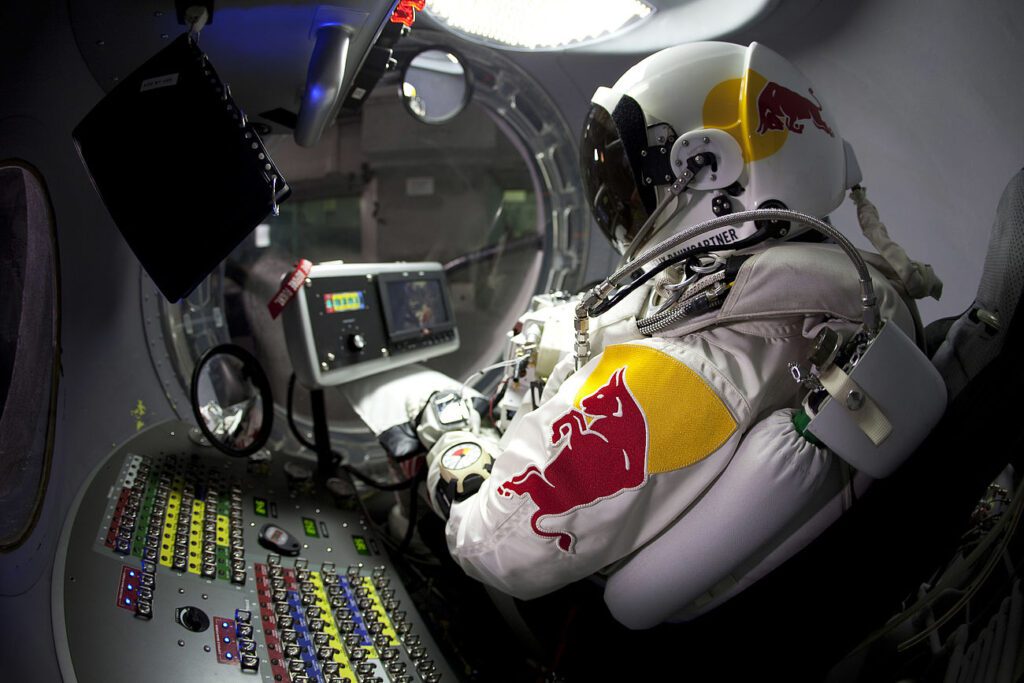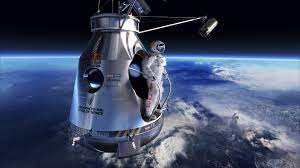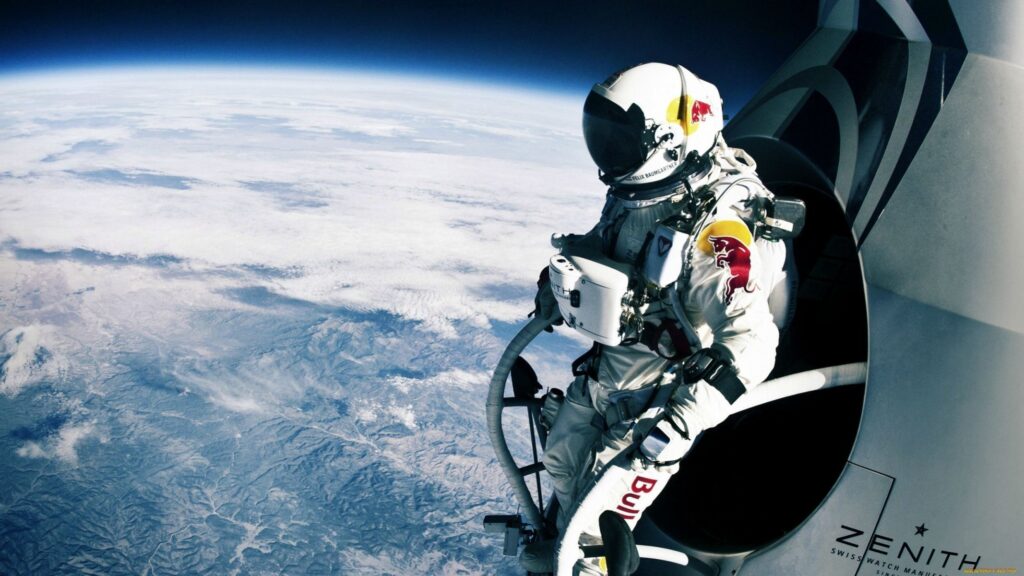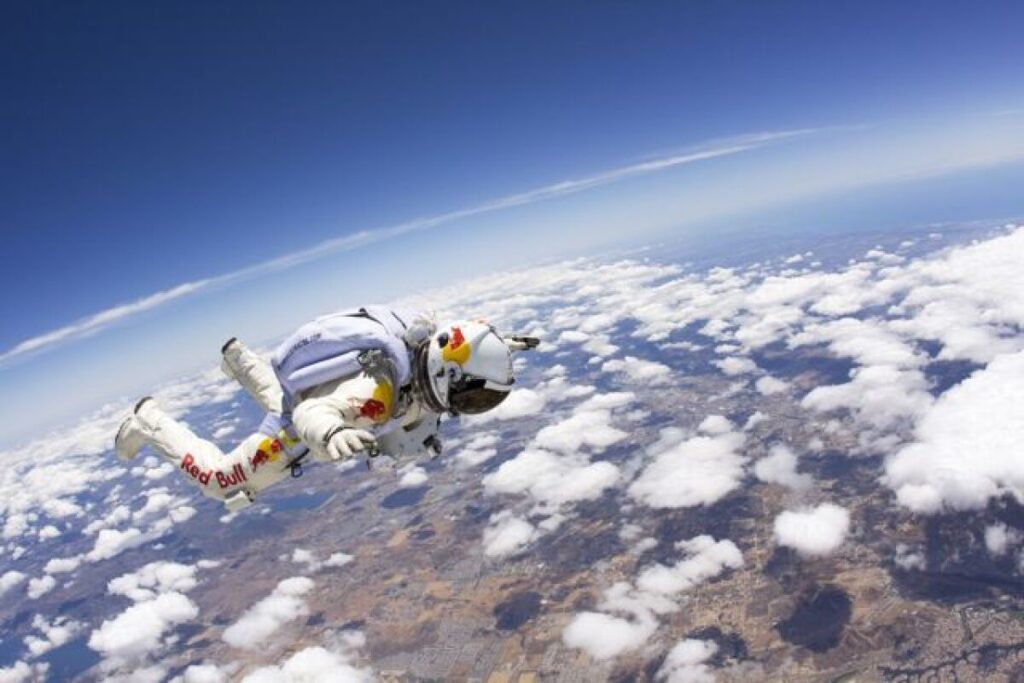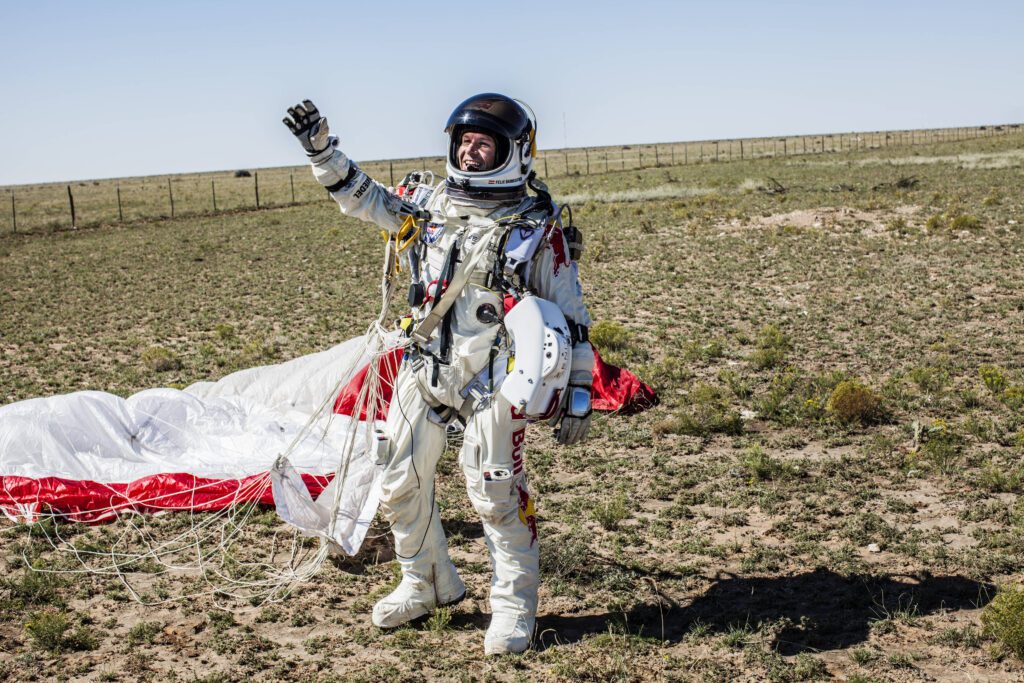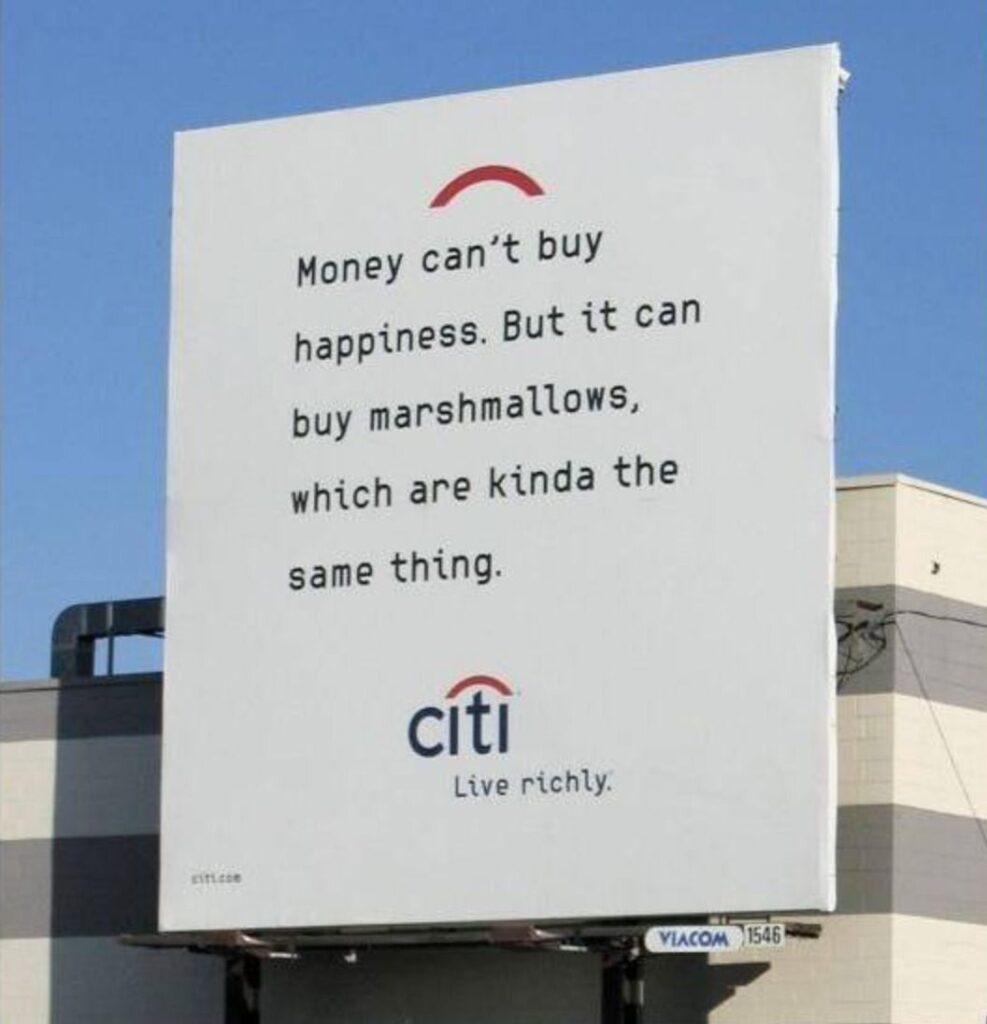Iconic Ads/ Campaigns – RedBull Stratos
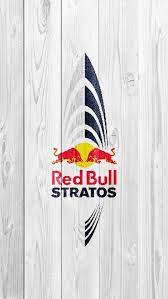
In 2012, RedBull pushed the bar once further with the “Stratos” project. The energy drink captivated the world’s interest and imagination.
Felix Baumgartner approached RedBull before it reached him, asking them to sponsor him in a BASE (buildings, antennas, spans/bridges, and earth/cliffs) jump from the 860-foot New River George Bridge in West Virginia, USA. They refused him, but Felix, undeterred, went ahead and performed the stunts anyway.
RedBull decided to sponsor him after 32 BASE jumps, launching his career as a showman for the brand.
He perfected the BASE jump and rose to popularity by expertly flinging himself off the world’s tallest buildings in front of cameras.
But “How many of the world’s tallest buildings do you wish to do?” “It was always the same concept.”
Felix was set on breaking Joseph Kittinger’s (USA) 52-year-old record for the highest freefall parachute jump. The ultimate challenge between Red Bull and Baumgartner had begun.
Joseph, who was now 84 years old, was Felix’s main point of contact during the record-breaking jump and assisted him throughout the expedition.
The equipment was perfected after years of unimaginably expensive research, development, and testing with industry specialists.
Felix’s pressure suit was one of the most crucial aspects of the leap because if it failed, he would almost likely perish.
Felix despised the confining costume he was forced to wear so much that a psychologist was brought in to assist him in coming to terms with it.
In a pressure suit, some people experience claustrophobia. Felix had it as well. He conducted the altitude chamber tests and everything else in a pressure suit for three or four years. Finally, he had to undergo testing in San Antonio, Texas, where he had to wear the costume for four hours. He decided he couldn’t do it the day before they were meant to leave, claiming claustrophobia. He thought he could put up with the costume for approximately an hour before deciding to leave. He then left the project and returned home. It took five months and a slew of psychiatrists and sports psychologists to persuade him that he was capable of jumping.
Felix was well aware that he had to take action. First and foremost, it would make him a multimillionaire. He’d been training for five years and had a lot of his own ego to contend with. He never got over his fear of being trapped, but his desire to be wealthy and renowned outweighed his fear of the pressure suit.
By the mission’s dramatic conclusion, however, every possibility of a mistake or failure had been eliminated.
Felix was lifted to an altitude of 38,969.4 m inside a capsule by a gigantic balloon that was as tall as the Statue of Liberty when completely inflated and had a capacity of around 850,000 m3 (30 million cu ft) (127,852 ft).
Prior to launch, the crew inserted approximately 5,097 m3 (180,000 cu ft) of helium into the balloon. This was enough helium to get the balloon off the ground, but they didn’t fill it to the brim since they needed to leave room for the helium to expand as the balloon rose.
The helium inside the balloon expanded as the air pressure reduced as the balloon rose in altitude, finally filling the entire envelope to its full capacity of around 850,000 m3 (30 million ft3) at jump altitude.
Felix’s two-hour flight into the stratosphere was made possible by a helium-filled balloon.
Felix poised on the capsule’s ledge for a few final moments after depressurizing it — the point of no return – before attempting his death-defying, multiple-record-breaking leap to Earth.
“I’m going home now,” he said.
He began his journey 99,000 feet above Mount Everest and returned to Earth in 9:09 minutes.
The fact that the “live” broadcast included a built-in delay, allowing the public to be spared a grisly spectacle in the case of a catastrophe, added to the event’s peril.
Felix could be heard running through the checklist with Col Kittinger after the lengthy, tense ascent, and telling about the unexpected fogging of his visor. This problem was soon rectified.
Sound travels at a speed of 1,236 km/h. Felix reached a top speed of 1,357.6 km/h during his stratospheric skydive.
Once Baumgartner was safely back on Earth, he stated, “It was an incredible up and down today, just like it’s been with the whole project,”
Felix’s capsule included 15 cameras, five of which were mounted to his suit, making for an amazing viewing experience for anyone watching the transmission.
His jump demonstrated that future test pilots and NASA Mercury astronauts could survive ejection from high heights. It was part of the Excelsior military project, which was kept under wraps.
The Effect
The most brilliant aspect of this marketing effort is that it isn’t a marketing campaign at all. The goal of the initiative was to shatter the world record and get the human race to push boundaries once more. It’s not often that a group of individuals can come together to support a test of human capabilities. There was a lot of imagery and data for spectators to chew on, with science, athletics, and engineering taking centre stage.
Nearly 80 TV stations in 50 countries broadcasted the event. The live webcast received 52 million views after being disseminated through 280 digital partners, making it the most-watched live feed in history. On Youtube, there were 8 million viewers (restricted by Youtube itself)
The broadcast lasted more than three hours, and the RedBull logo appeared in every shot. This was a brilliant move because they were now in the history books and in the minds of potential clients. In the following six months, sales increased by 7%, producing $1.6 billion, and the company sold 5.2 billion cans the following year. This was a 13% increase over the previous year, with many locations seeing double-digit increases.
